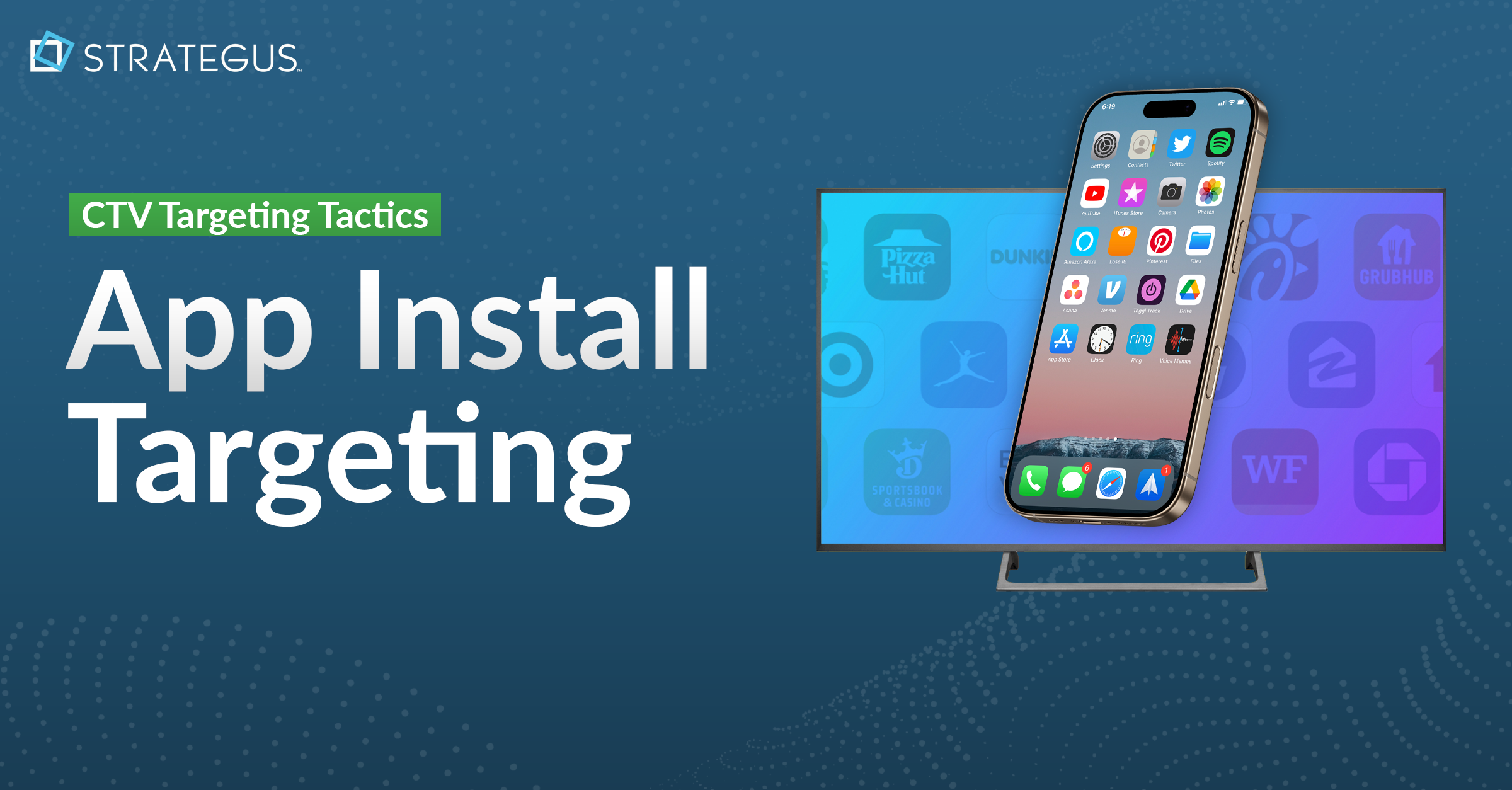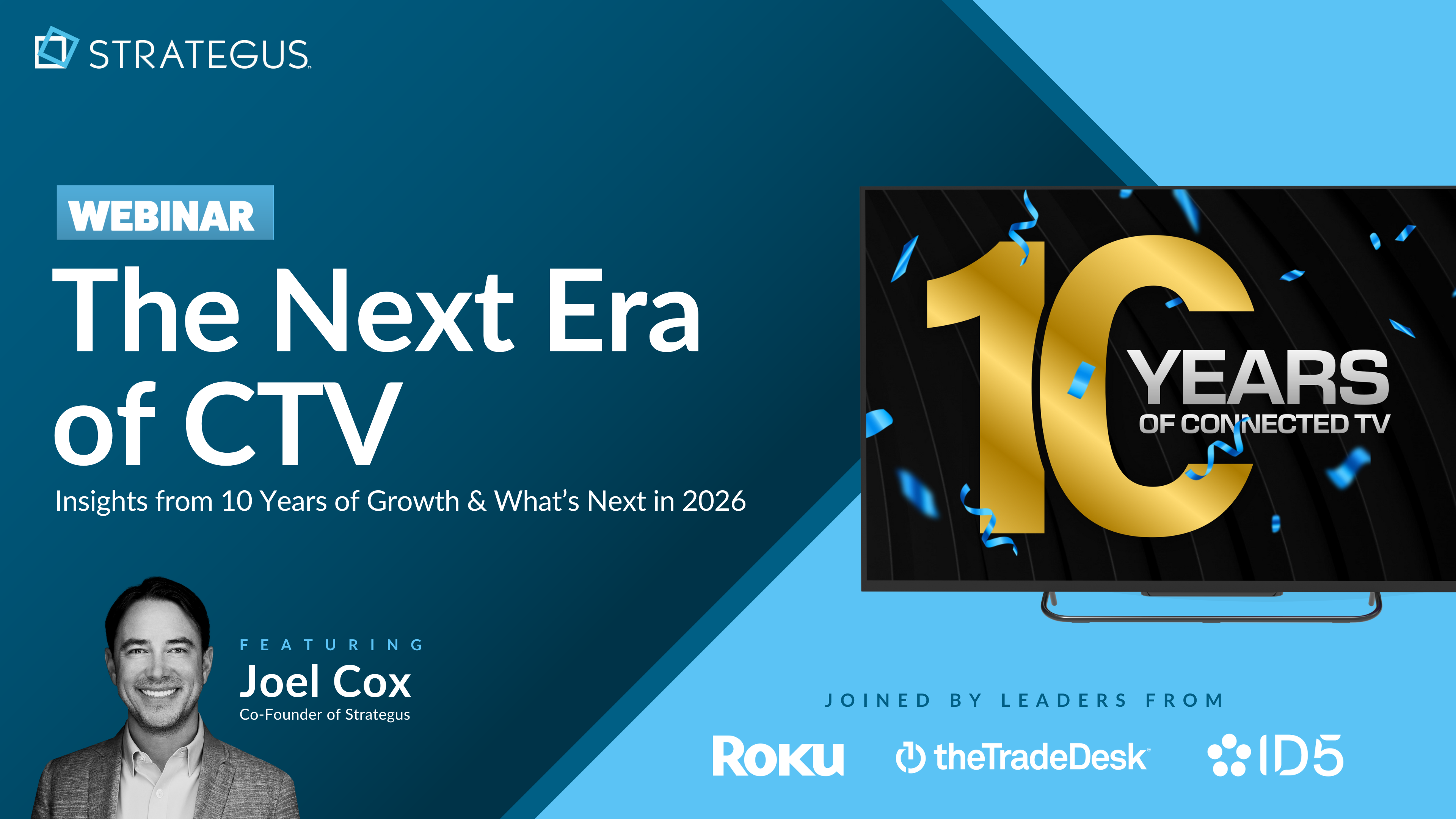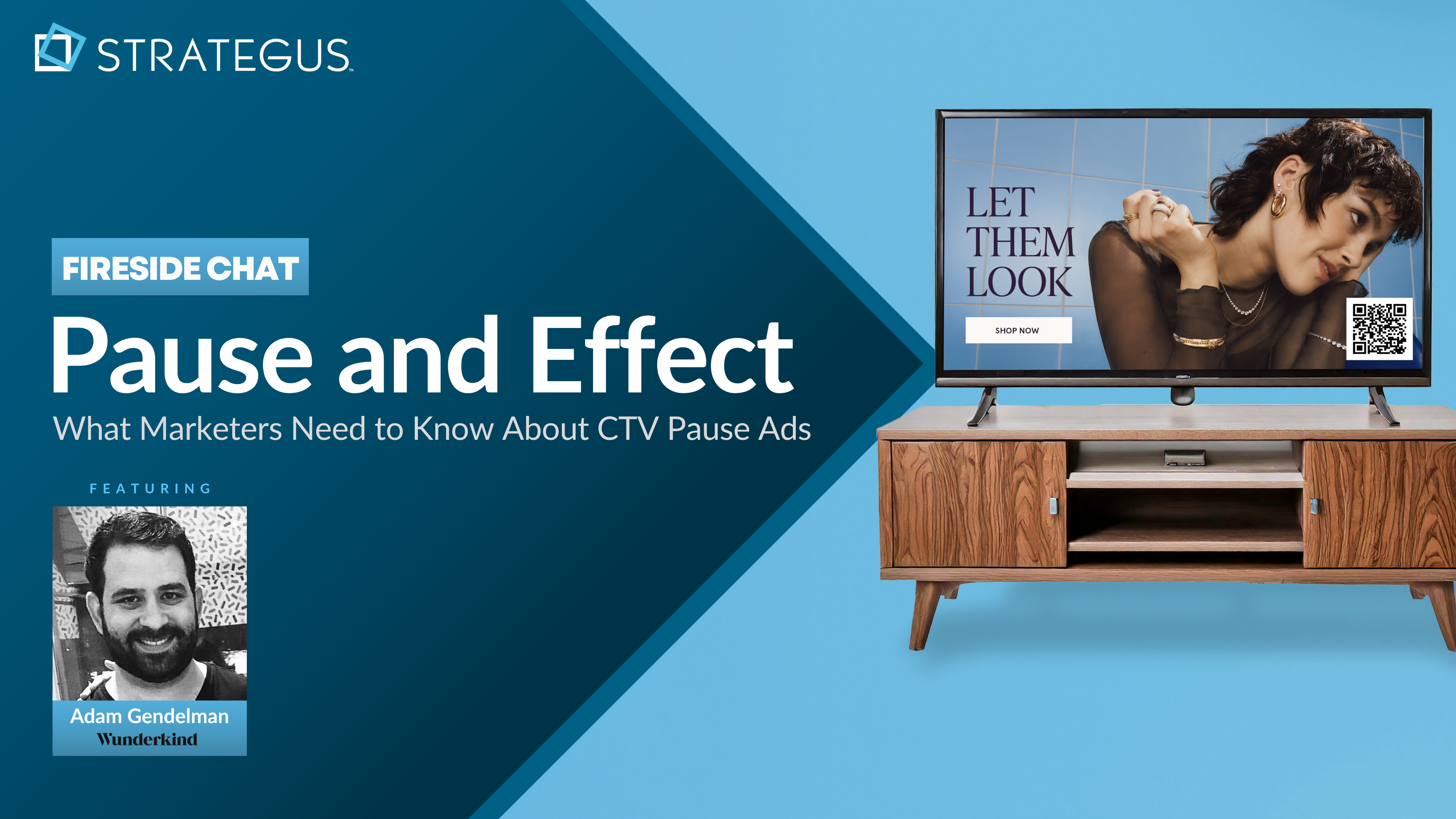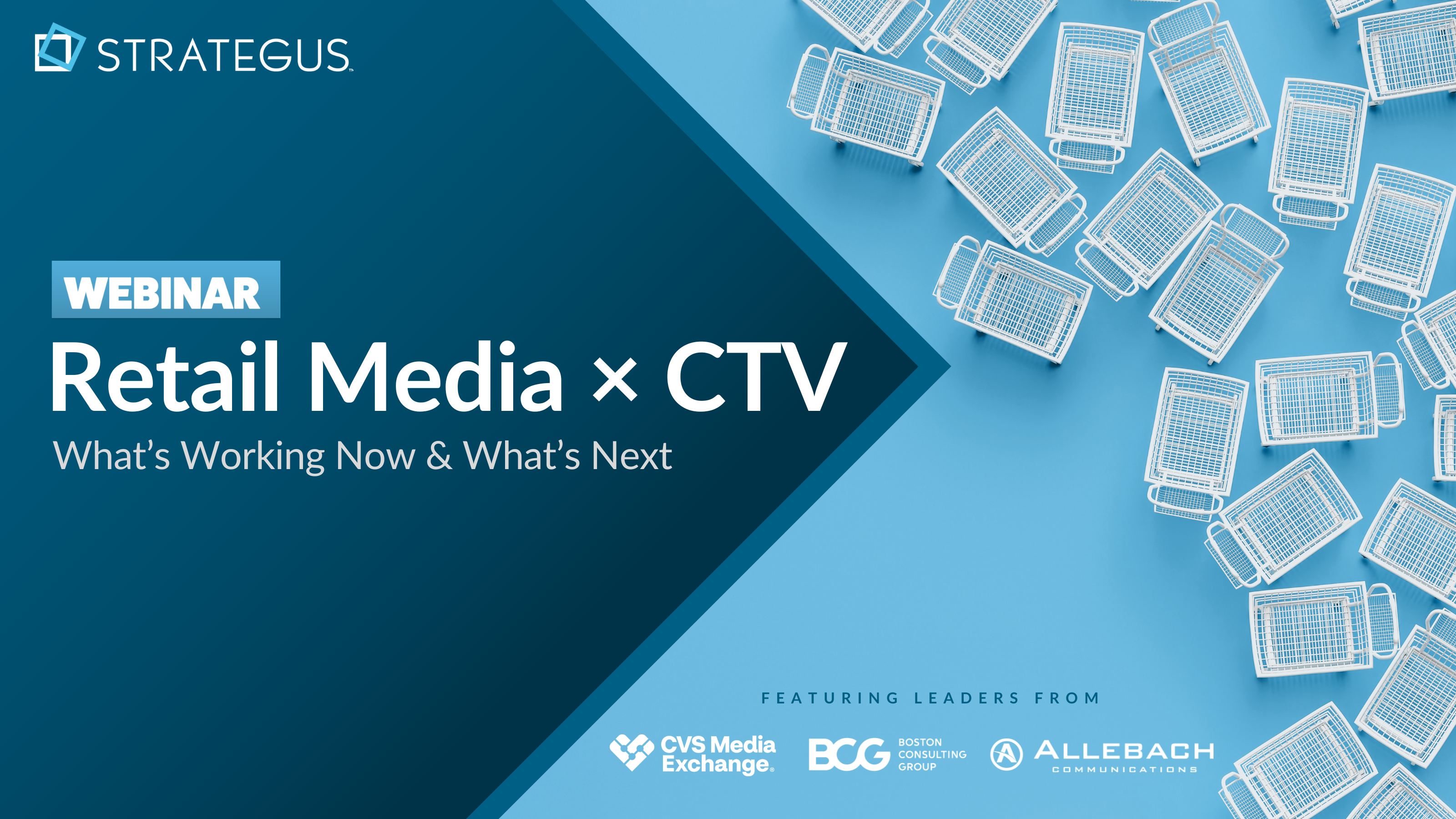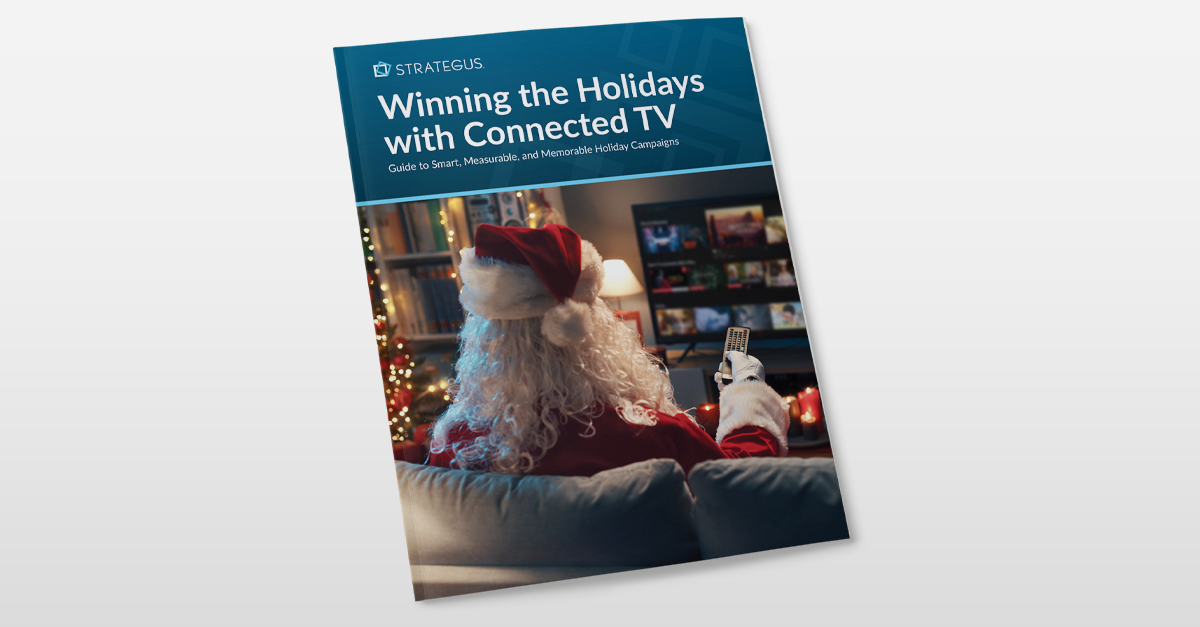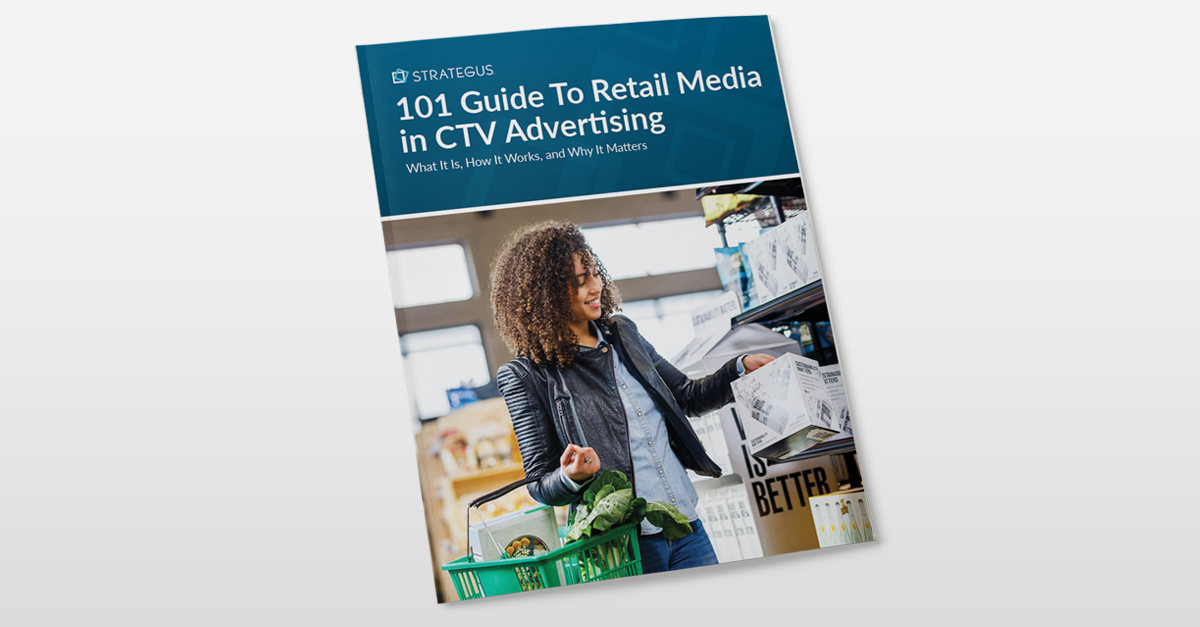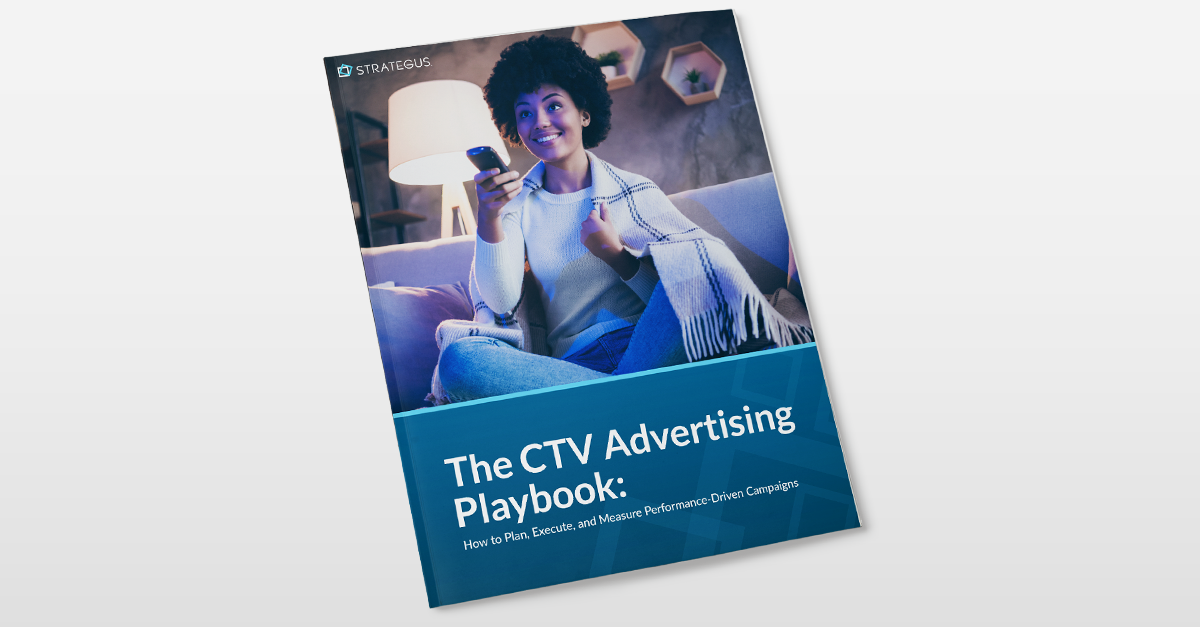- Home
- Strategus Blog
- Live Sports Advertising: The Next Big Win for CTV
Live Sports Advertising: The Next Big Win for CTV
 Traci Ruether
Traci Ruether
10 minutes read

Live sports have long been the saving grace for cable and satellite television. Viewers begrudgingly kept their overpriced TV plans to cheer on their favorite teams. As a result, advertisers hoping to reach these audiences paid top dollar to score a spot.
But this is all changing in 2023.
As more and more viewers cut the cords, content owners have followed suit. Thursday Night Football, Major League Soccer, and NFL Sunday Ticket have all made the move to streaming. AppleTV+ (MLS) Amazon Prime (TNF) and YouTube TV (NFL Sunday Ticket) now hold exclusive rights to major sporting events, while platforms like SlingTV and Fubo republish sporting events that air on cable and satellite networks.
Due to this growth, live sports now account for 30% of all connected TV (CTV) viewing. This changes the game for advertisers, opening up opportunities to reach hyper-engaged viewers in digital-first environments. With live sports streaming, agencies and brands gain access to advanced targeting, premium inventory, cost efficiencies, and more.
We recently hosted a webinar with experts at FuboTV and CTV supply-side platform (SSP) Beachfront, along with our own EVP of Strategy and Innovation, to dive into this trend. You can watch the recording here — or keep reading for a complete analysis of the industry trends driving this shift.
The Evolution of Live Sports Streaming
Over-the-top (OTT) streaming is nothing new. And live sports have always been the most-watched broadcasts on television. So why has it taken so long for sports to make the move to streaming?
A combination of financial constraints and technological considerations have been to blame. More specifically, adoption has been stifled by the challenges of live streaming at scale, existing licensing agreements, and OTT revenue models.
Luckily, though, 2023 is finally the year that publishers, viewers, and advertisers are all-in on live sports streaming. Here’s a closer look at the challenges that the industry has overcome.
1. Technical Advancements
Distributing live streams to large audiences isn’t easy. Consider how Netflix made headlines earlier this year with a not-so-live broadcast of the Love Is Blind reunion.
After hyping up the live special, Netflix couldn’t deliver. Instead, viewers were met with a static screen that said “There’s an issue with the live stream. Hang tight! We’re trying to fix it as soon as possible.”
To everyone who stayed up late, woke up early, gave up their Sunday afternoon… we are incredibly sorry that the Love is Blind Live Reunion did not turn out as we had planned. We're filming it now and we'll have it on Netflix as soon as humanly possible. Again, thank you and…
— Netflix (@netflix) April 17, 2023
The event was proof that pulling off live broadcasts at scale can still cause hiccups. To be successful, streaming providers must reduce lag, maintain reliability, and deliver a seamless end-user experience.
Luckily, the technology behind these complex CTV environments has advanced leaps and bounds in recent years. Broadcasters making the move to live sports streaming have invested heavily in these capabilities. As a result, services like Amazon Prime — which holds exclusive rights to Thursday Night Football (TNF) — are delivering live broadcasts with the same reliability and speed that we’ve come to expect.
Strategus Co-Founder Joel Cox explains:
“When we consider that linear television has had nearly 60 years to perfect how they’re going to broadcast an NFL game, what has been accomplished in less than a handful of years in a streaming programmatic ecosystem is very impressive. It’s only blue sky from here. And this is the year we can all rely on a reasonably paced, reasonably performant campaign in CTV live sports.”
As industry leaders continue to push the limits of live sports streaming, it’s also likely that more innovation will make its way to the living room TV. Watch parties, augmented reality (AR), and other interactive experiences are early examples of what’s to come.
2. Licensing Rights
Speaking of Amazon’s TNF takeover, the adoption of live sports on CTV was previously hindered due to licensing obstacles. Major media companies paid huge sums of money for rights to this content, and until recently, big tech shied away from it.
After all, the streaming industry has traditionally focused on binge-worthy video-on-demand (VOD) content. Ted Sarandos, the co-CEO of Netflix, commented about their choice to stick with movies and TV shows during a recent earnings call:
“We really think that we can have a really strong offering for sports fans on Netflix without having to be part of the difficulty of the economic model of live sports licensing… We’re super excited about the success of our sports-adjacent programming.”
So, for now, Netflix will stay on the sidelines. The streaming powerhouse is instead focusing on sports programming that can be enjoyed on demand and has seen a ton of success with recent titles like Quarterback and Drive to Survive.
But other streaming platforms are moving the chains by going all-in on live sports. Amazon, Apple, and Google won negotiations for live sports media rights over the past couple of years — displacing agreements monopolized by industry players like DirectTV and Comcast.
These contracts often span many years and cost as much as $2.5 billion annually. For that reason alone, we’re confident this trend is here to stay. And because the big tech players often have more cash on hand (Apple has $64.2 billion and Google has $118.3 billion as of June 2023), they’re able to outbid legacy media companies (like Comcast at $$7.1 billion) without taking on liabilities.
3. Revenue Models
The streaming industry has also seen a recent shake-up in revenue models. Once dominated by subscription-based video on demand (SVOD), the industry is now taking a page from the traditional linear TV book by relying on ads to generate profit.
Free ad-supported TV (FAST) and hybrid video on demand (HVOD) are the two flavors of ad-supported streaming. With the former, you get free linear channels delivered over the internet on services like Pluto TV, Tubi, and the Roku Channel. And with HVOD, users pay lower monthly subscription fees to watch ad-supported content on Disney+, Hulu, Peacock, and (soon) Amazon Prime.
By adopting an HVOD model, top streamers are now bringing in both subscription and ad-generated revenue. This allows them to compete better with cable TV, which has benefited from multiple income streams all along.
More money equates to more purchasing power. As a result, OTT platforms are now able to invest those dollars into premium sports content.
Why 2023 Is Finally the Year for Live Sports Streaming
In addition to the major changes detailed above, a handful of microtrends are further driving the adoption of live sports streaming.
- The writer's and actor's guild strike has halted the production of movies and TV shows — leaving a gap in new content. That leaves us with live sports, news, and reality TV as the three primary sources of fresh entertainment for the foreseeable future. Sports viewership will increase for this reason, with casual fans becoming regular viewers.
- Regional sports networks (RSN) are exploring direct-to-consumer streaming as a way to reach fans who’ve cut the cord. The Cubs, for instance, launched Marquee Sports Network in February of 2020 as the exclusive broadcaster of Cubs games not shown on national TV. This service is available on Fubo TV and can also be streamed individually on the Marquee App.
- Streaming claimed the largest share of TV viewing in July of 2022, surpassing cable and broadcast for the first time. This adoption of digital-first TV continues to grow — prompting the migration of all content types to CTV environments.
What This Means for Advertisers
So why is this meaningful to advertisers? What makes live sports advertising more valuable than other types of content? And how is a commercial that plays on a streaming service any different from one that airs on cable?
Let’s break it all down.
Hyper-Engaged Viewers
Without a doubt, live sporting events are the biggest TV events of the year. Whether it’s the Olympic Games, the FIFA World Cup, or the Super Bowl, these broadcasts are consumed by entire households that watch the events together and comment on the commercials as they air. Because sports are viewed live, nobody has the option to fast-forward through commercials. Viewers are also less inclined to channel surf. That means advertisers can reach large, lively audiences with eyes glued to the TV.
Targeted and Niche Audiences
With CTV advertising, commercials are targeted to individuals based on demographic and personal factors. Hence, while your marathon-running neighbor may see an ad for Nike running shoes, you’ll be targeted with an ad more fitting to your interests, purchase history, and hobbies during the exact same broadcast.
What’s more, live sports are already consumed by niche audiences. This lets advertisers create relevant campaigns that drive conversions.
Katie Long, the VP of Demand at Beachfront, explains:
“Live sports streaming creates these opportunities for consumers to connect with content that might be more of a niche environment — like motorsports, surfing, or even cricket.
You would not have that in a primetime environment or primetime exposure in a cable environment in the past. And now it's not only creating more opportunities for publishers to connect with fans and the content that they love, but also for advertisers to be in that relevant environment.”
Social and Connected Experiences
What are the hottest topics at the water cooler on the Monday following the Super Bowl? Easy. The game, the halftime show, and — you got it — the commercials.
Ads that accompany live sporting events benefit from the social nature of these broadcasts. And viewers don’t only discuss what aired at the office. They also tweet about their favorite ads and search for them on YouTube. This means more bang for your buck as your advertising efforts become part of a larger conversation.
Democratization of Inventory
When ads are programmatically served to individuals, there’s a lower cost of entry. That’s because advertisers only pay to run their ads to their target market. This allows mid-market companies to tap into the power of TV advertising.
Fubo’s VP of Sales Matt Felder explains:
“One thing that has really stood out to me as far as CTV’s entry into live sports (in addition to the ability to address an audience and advertise one-to-one) is the lower cost of entry for marketers when they want to select who they want to reach… It's no longer like the biggest events are reserved for the top 100 advertisers. There's accessibility there. And that's really exciting.”
Attribution and Tracking
It’s nearly impossible to prove specific results when advertising on linear TV. For this reason, TV advertising has traditionally been approached as a branding play at best.
With live sports streaming, though, advertisers gain access to attribution and measurement tools that tie their ads to concrete actions that viewers take. That means, rather than crossing your fingers that your ad works, you can track whether a viewer visited your site, walked into your brick-and-mortar location, or made a purchase following exposure.
Beyond just quantifying return on investment (ROI), this data-rich insight allows marketers to continuously optimize their campaigns for better performance.
How to Get Started With Strategus
Live sports streaming unlocks countless opportunities for advertisers. But running effective campaigns is complex without the right tools and partnerships.
Agencies and brands have two choices when approaching CTV advertising: a self-service platform (DSP) or a managed service partner like Strategus. And unless you have substantial in-house resources with deep CTV expertise, we’d recommend going the managed service route.
As the only pure-play CTV managed service partner, Strategus delivers effective campaigns that make the most out of your investment. That’s why marketers rely on us to deliver high-performance CTV campaigns backed by results they can see in real time.
Looking to take advantage of live sports advertising on CTV? Contact us today to find out how we can help.

Traci Ruether is a content marketing consultant specializing in video tech. With over a decade of experience leading content strategy, she takes a metrics-driven approach to storytelling that drives traffic to her clients' websites. Follow her on LinkedIn at linkedin.com/in/traci-ruether or learn more at traciruether.com.
Strategus is a managed services connected TV(CTV) advertising agency with over 60,000+ campaigns delivered. Find out how our experts can extend your team and drive the result that matter most.
Talk to an Expert
Table of Contents
Seeking a Custom CTV Strategy That Delivers?
What to read next
App Event Tracking: Tie Mobile App Activity to CTV Campaigns
Let’s say you’re running a CTV campaign for a personal finance app.
5 minutes read

Stop Guessing Who Your Audience Is — Let Their Apps Tell You
Connected TV (CTV) targeting often falls in one of two camps.
8 minutes read
See Who Bought After Your Ad + How Much They Spent
You can’t improve what you can’t measure. And for years, that’s been a major problem with TV advertising.
4 minutes read

First-Party Attribution: Match Ads to Sales With CRM Data
The value of first-party data continues to grow.
7 minutes read



